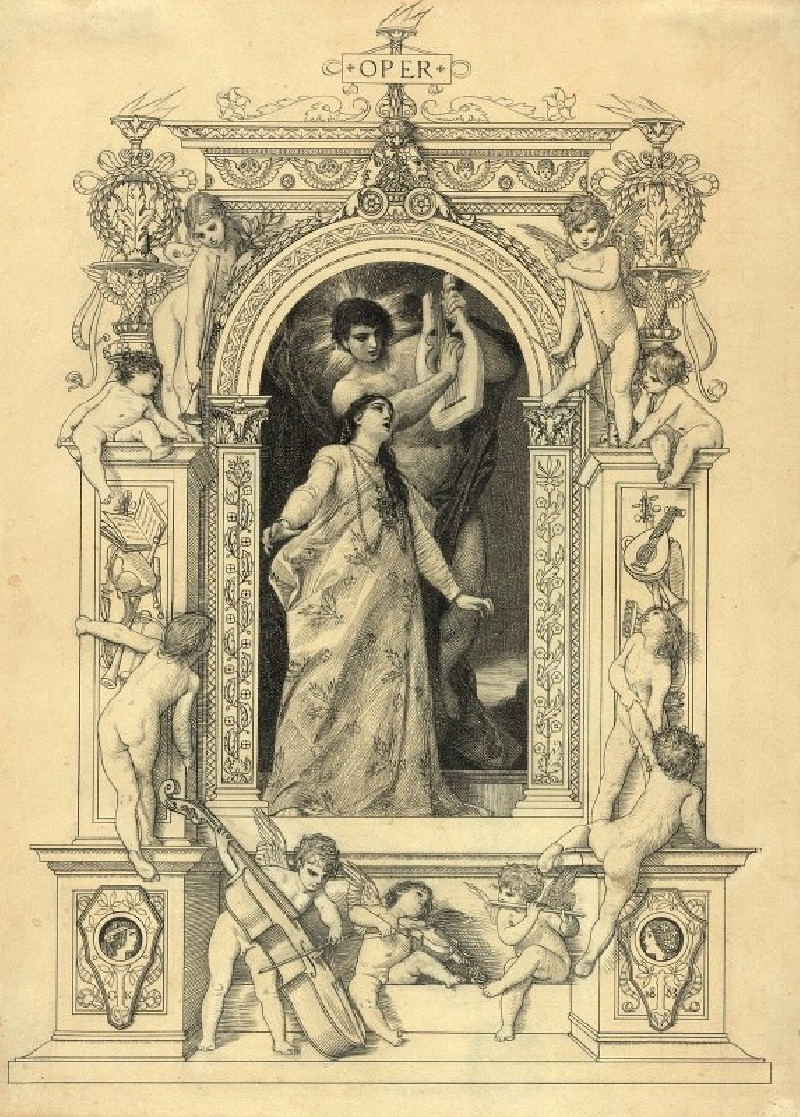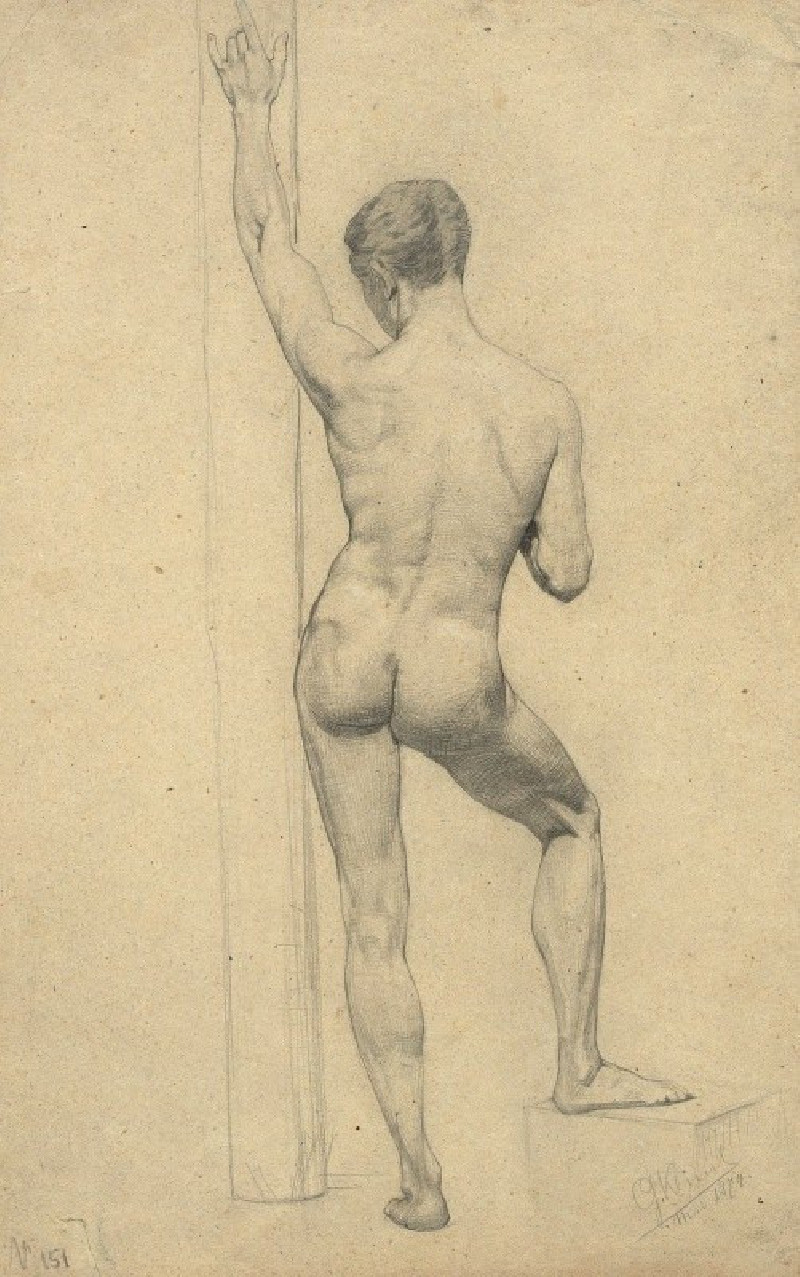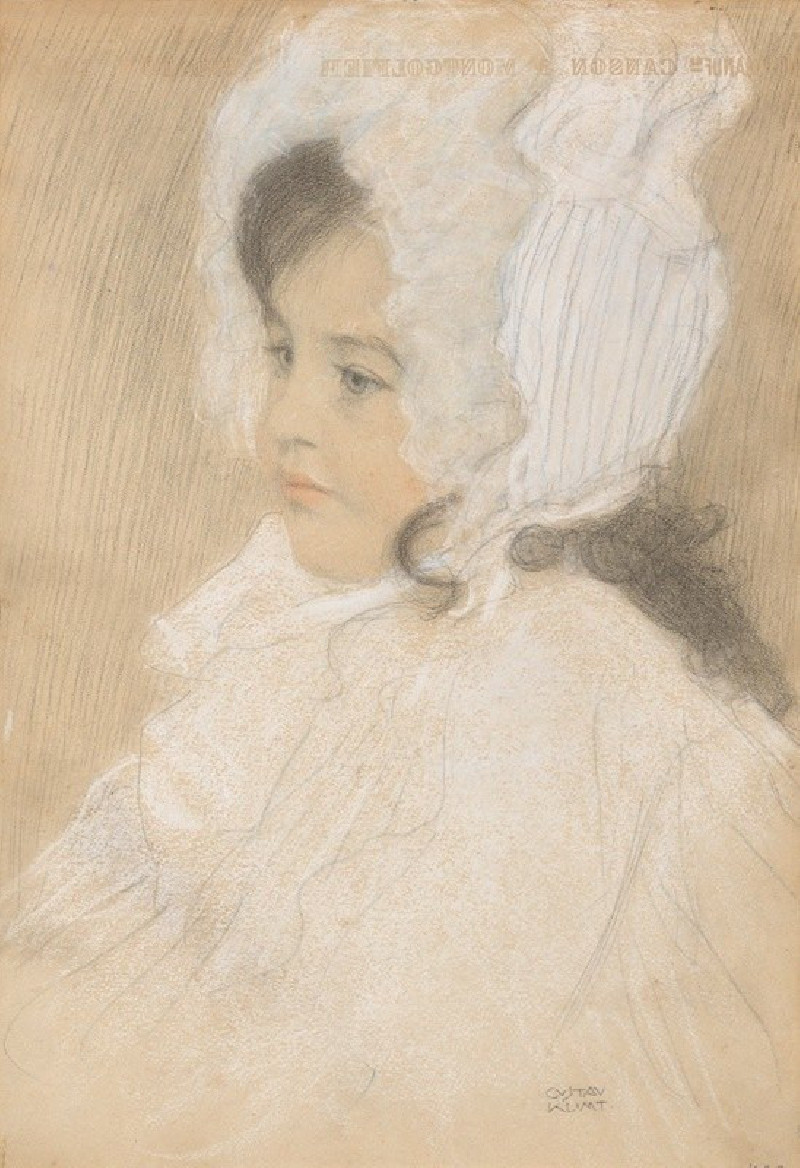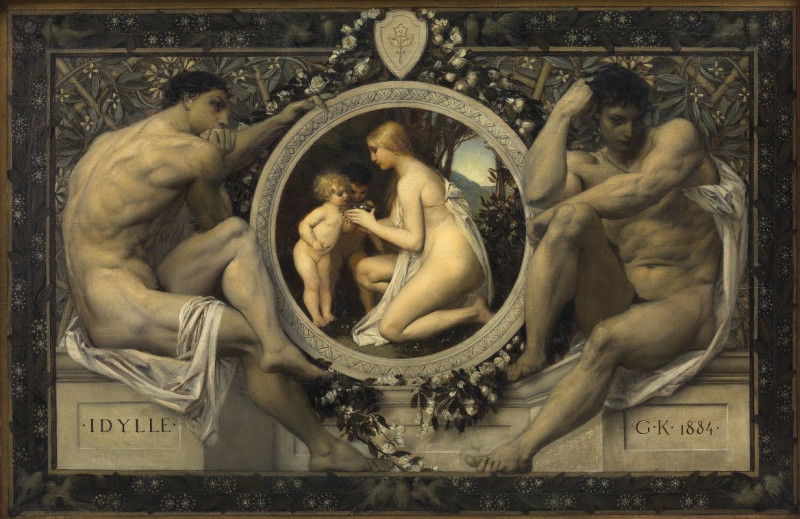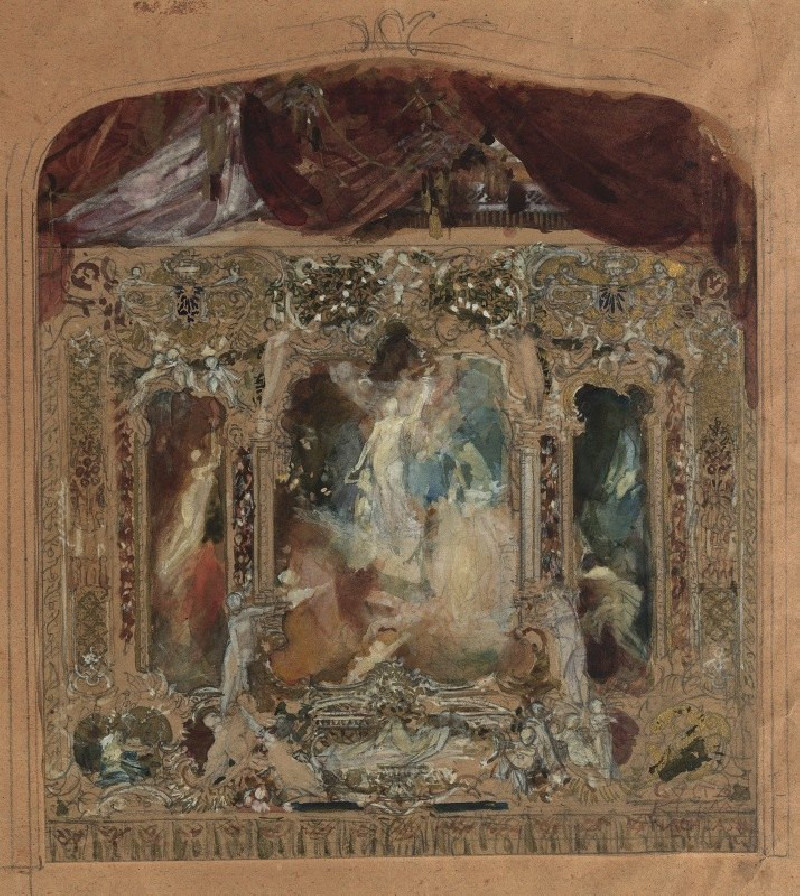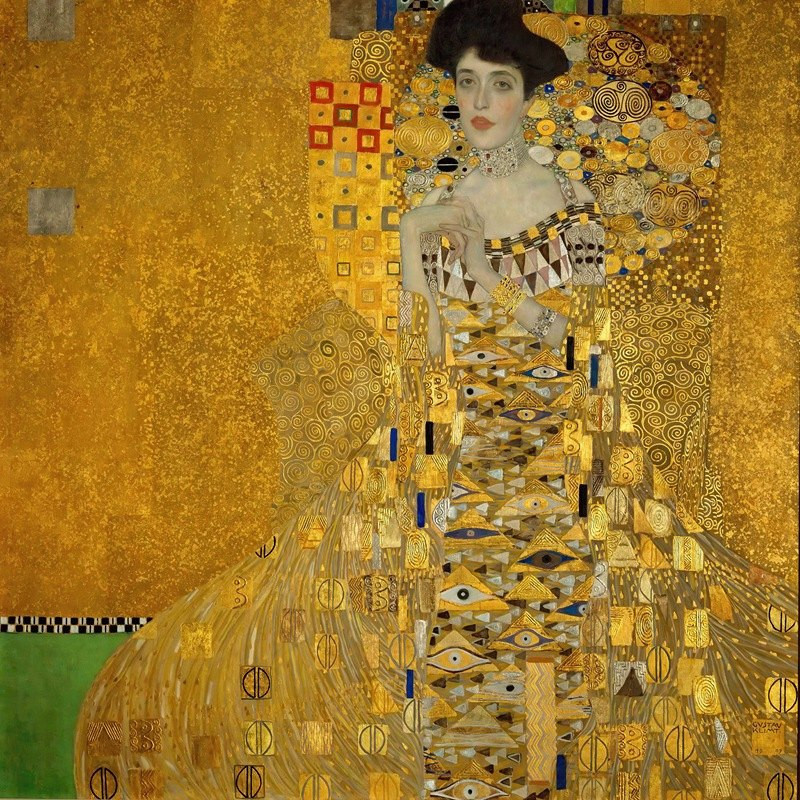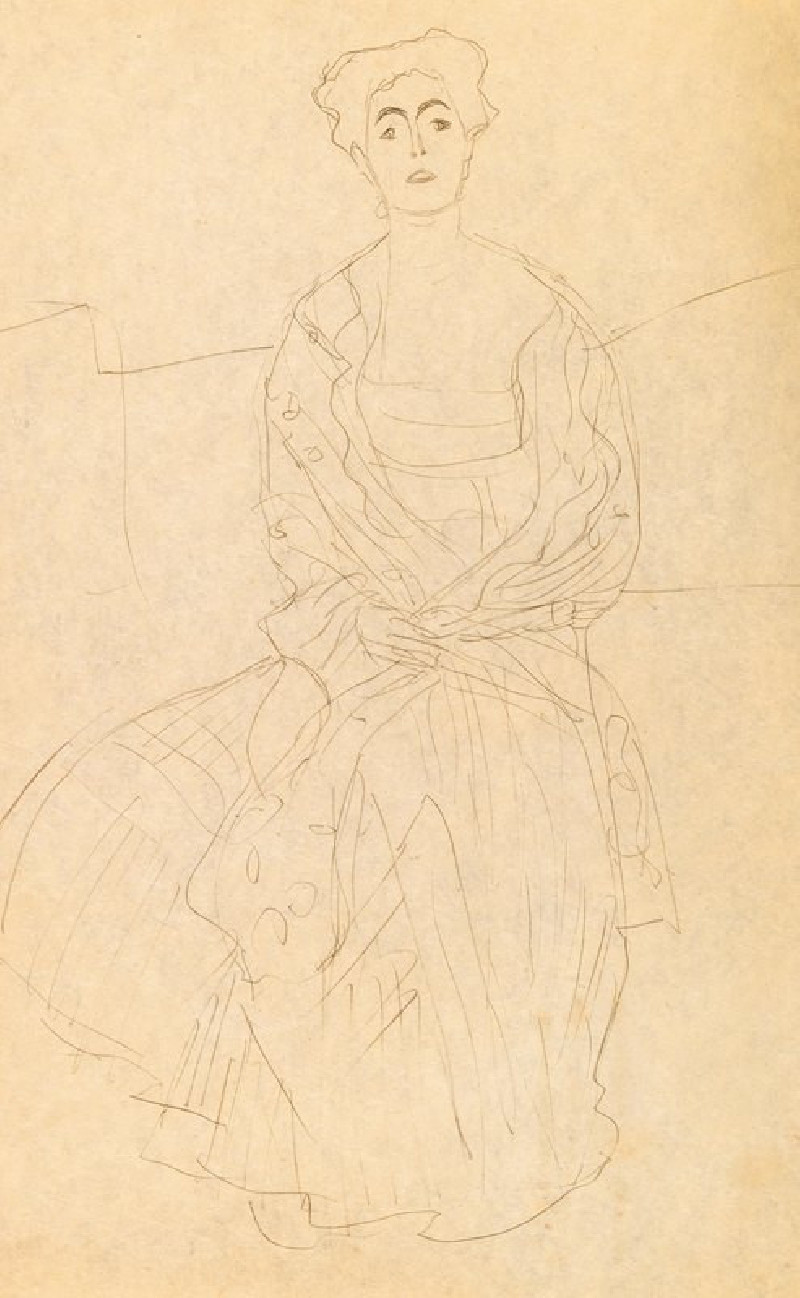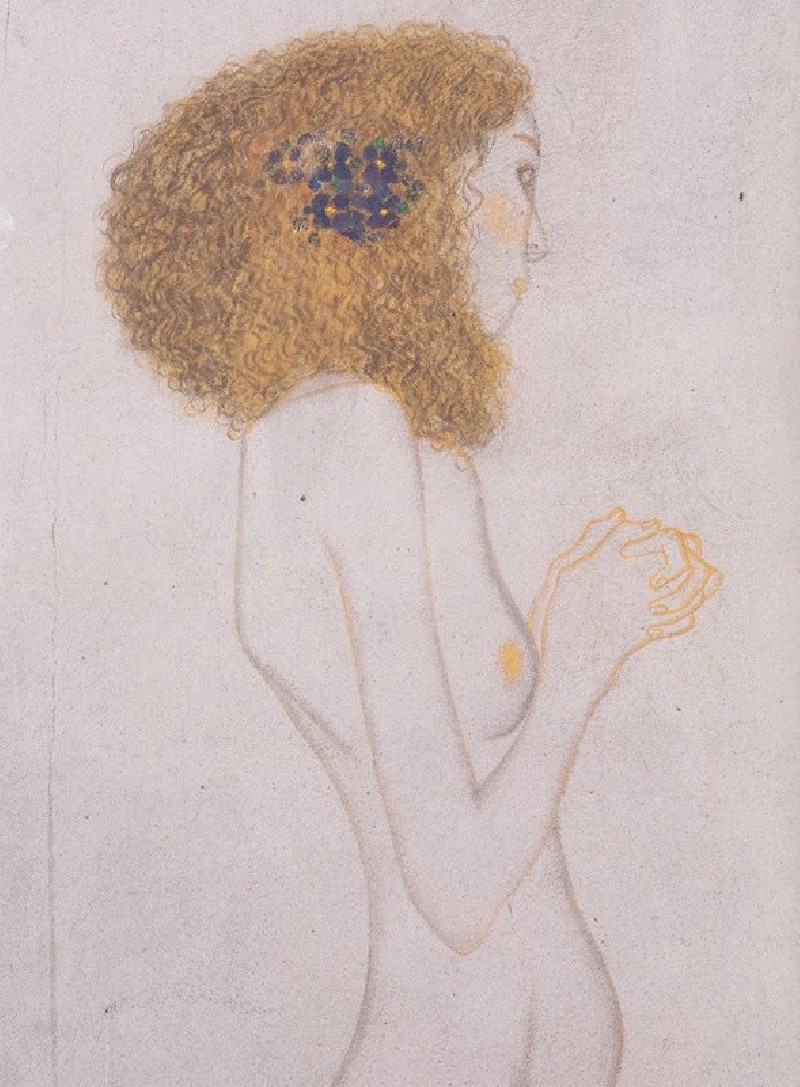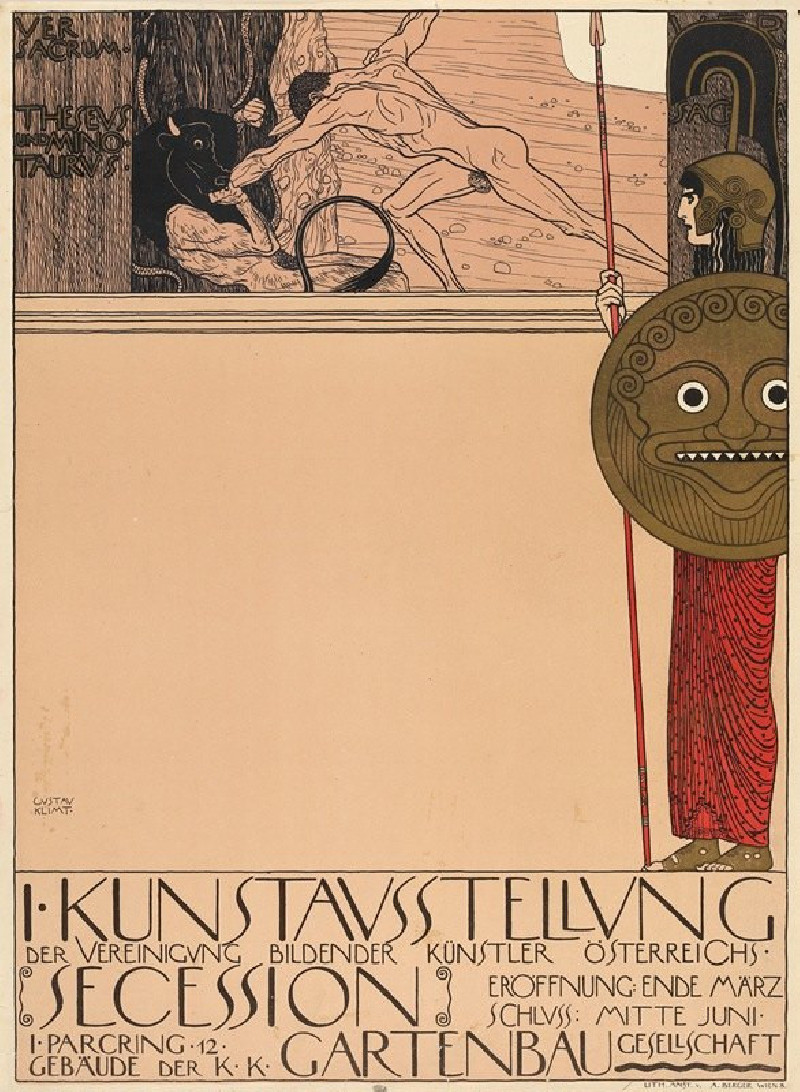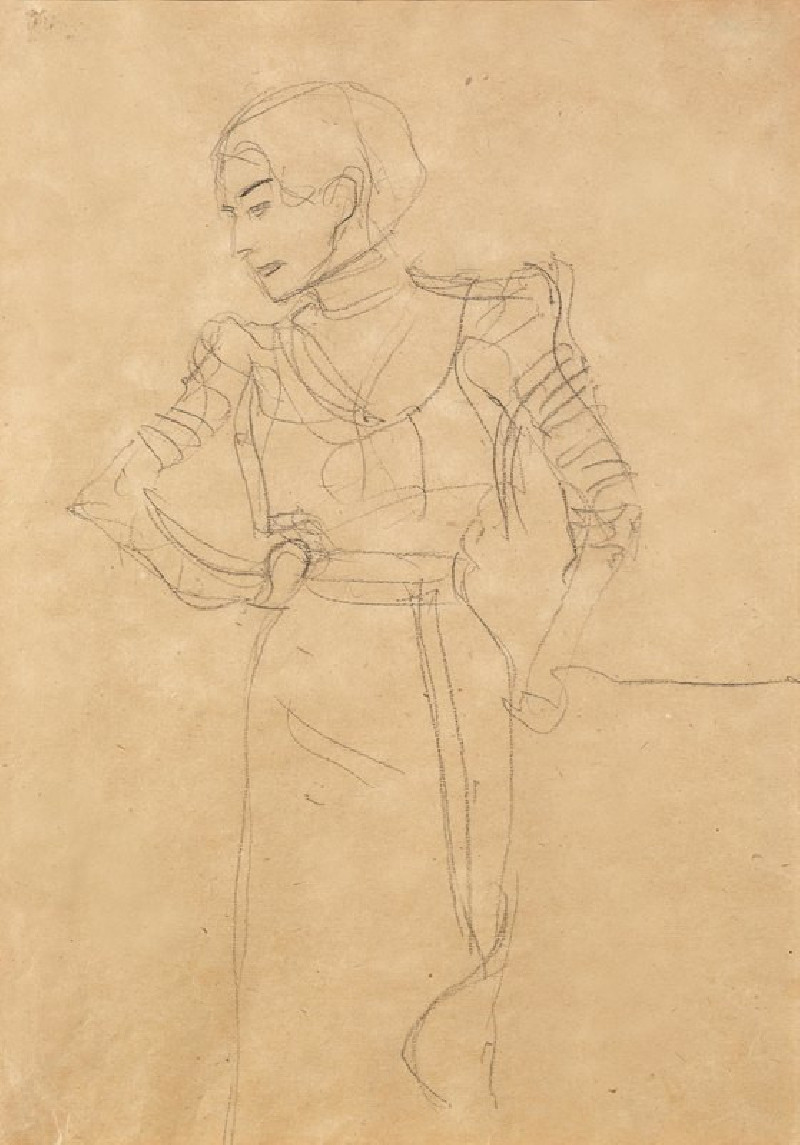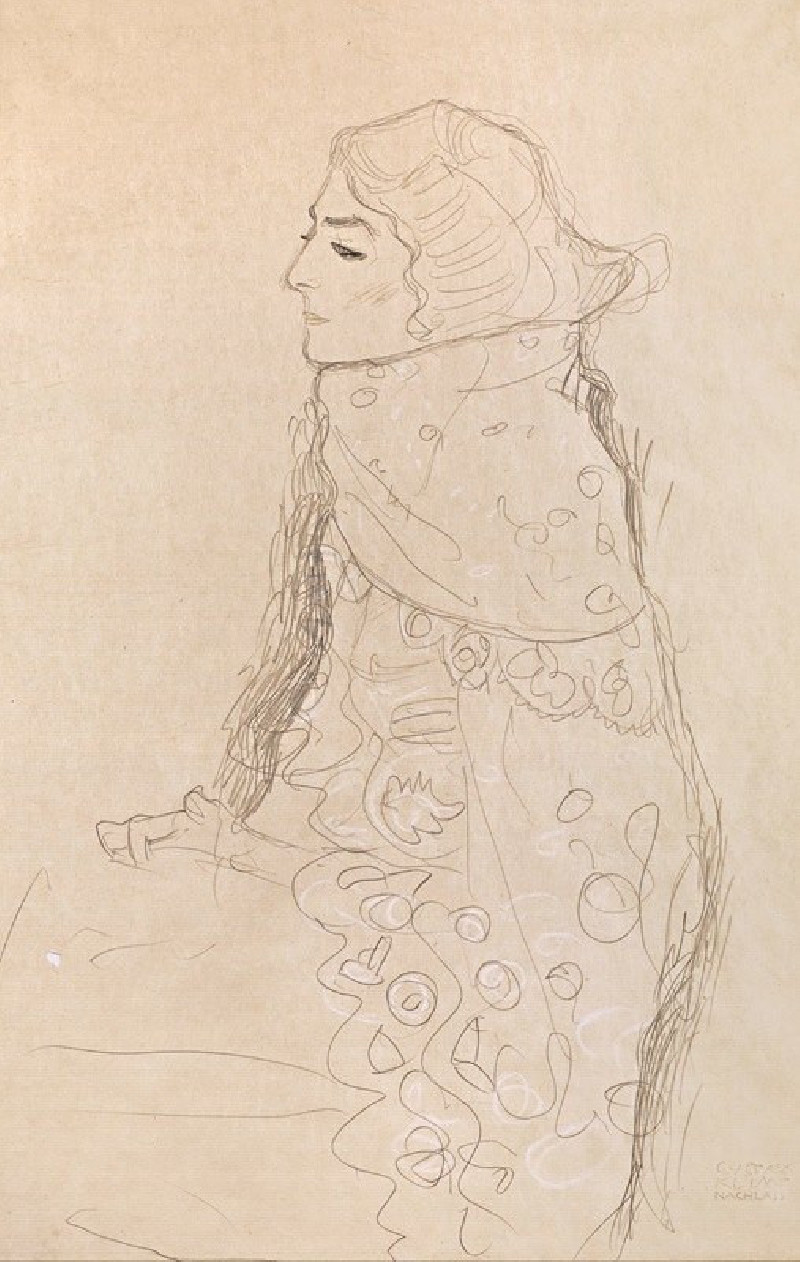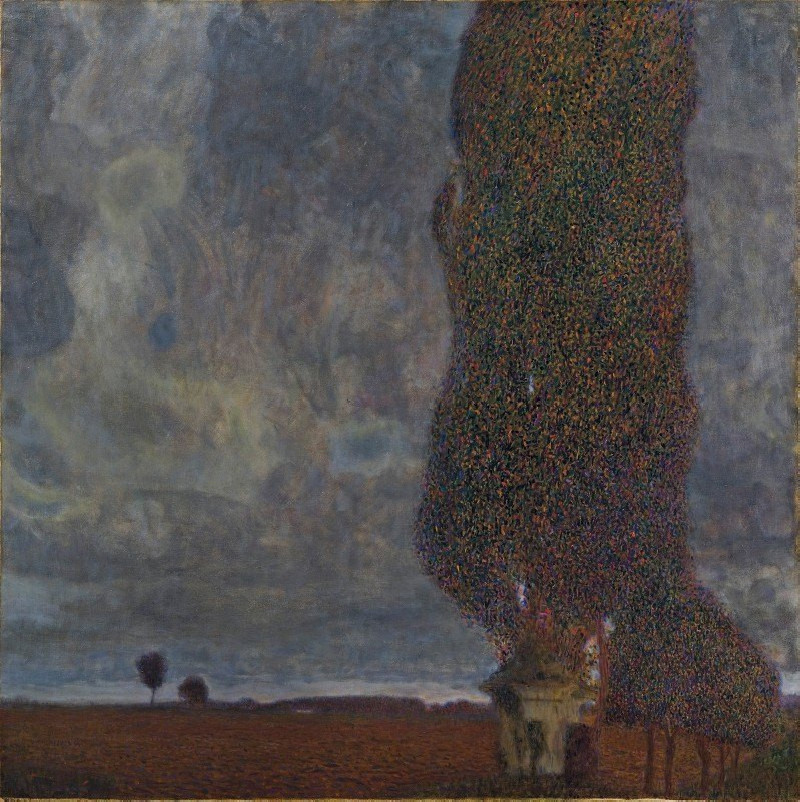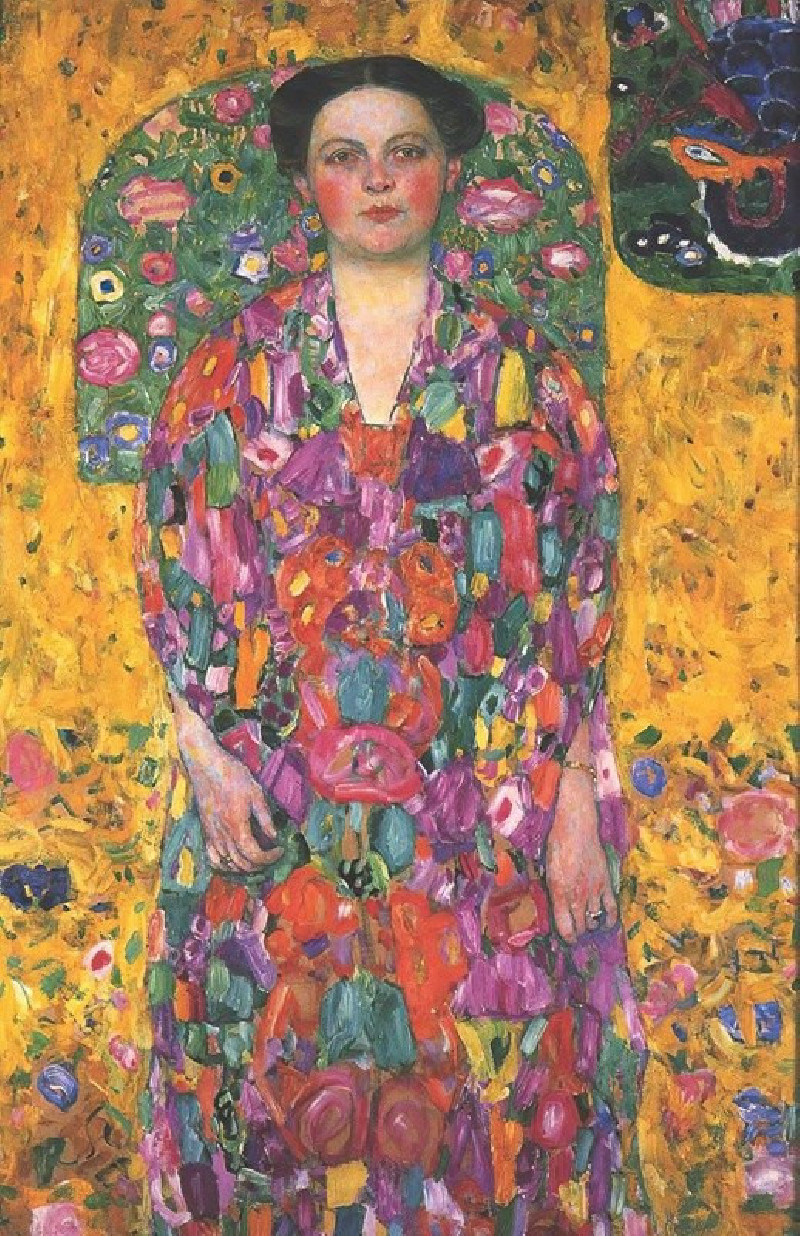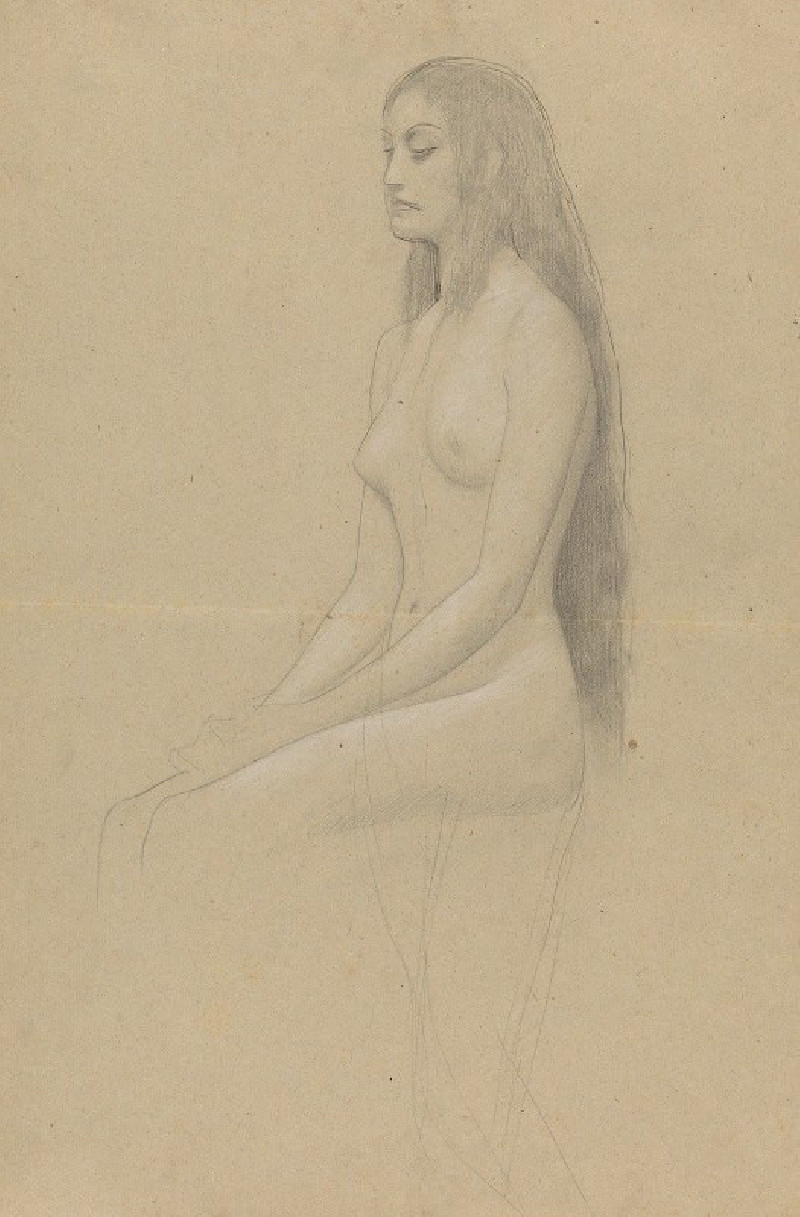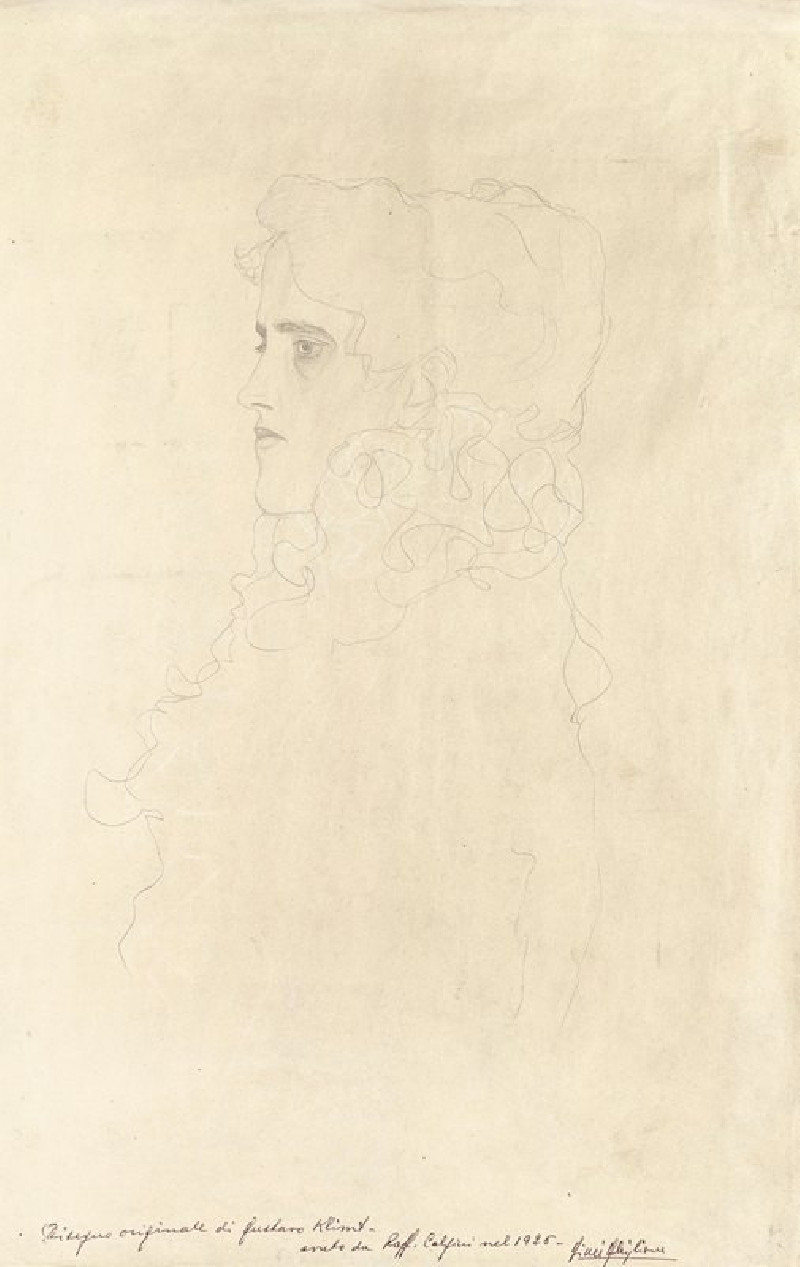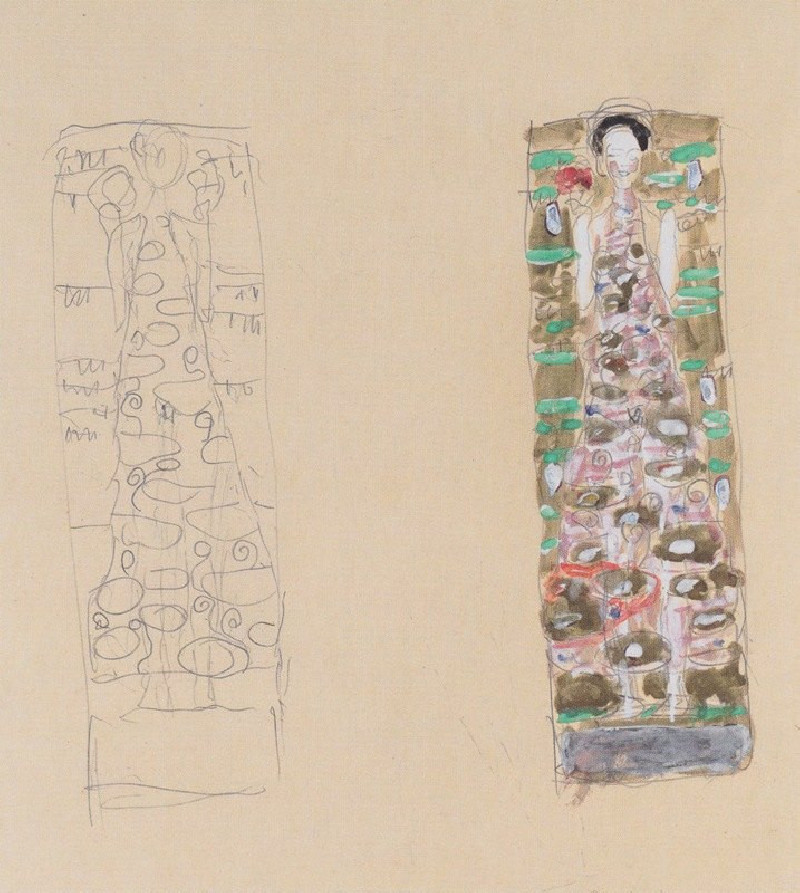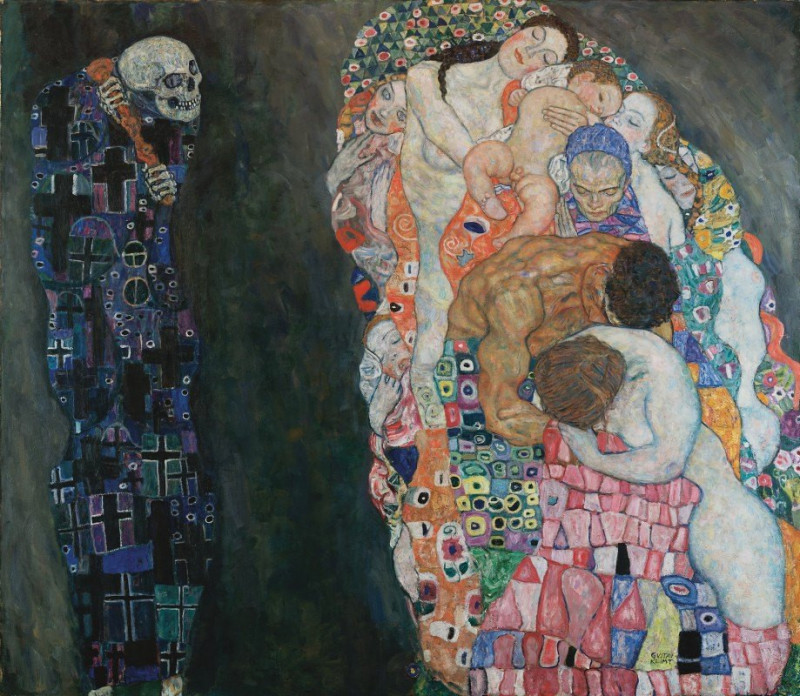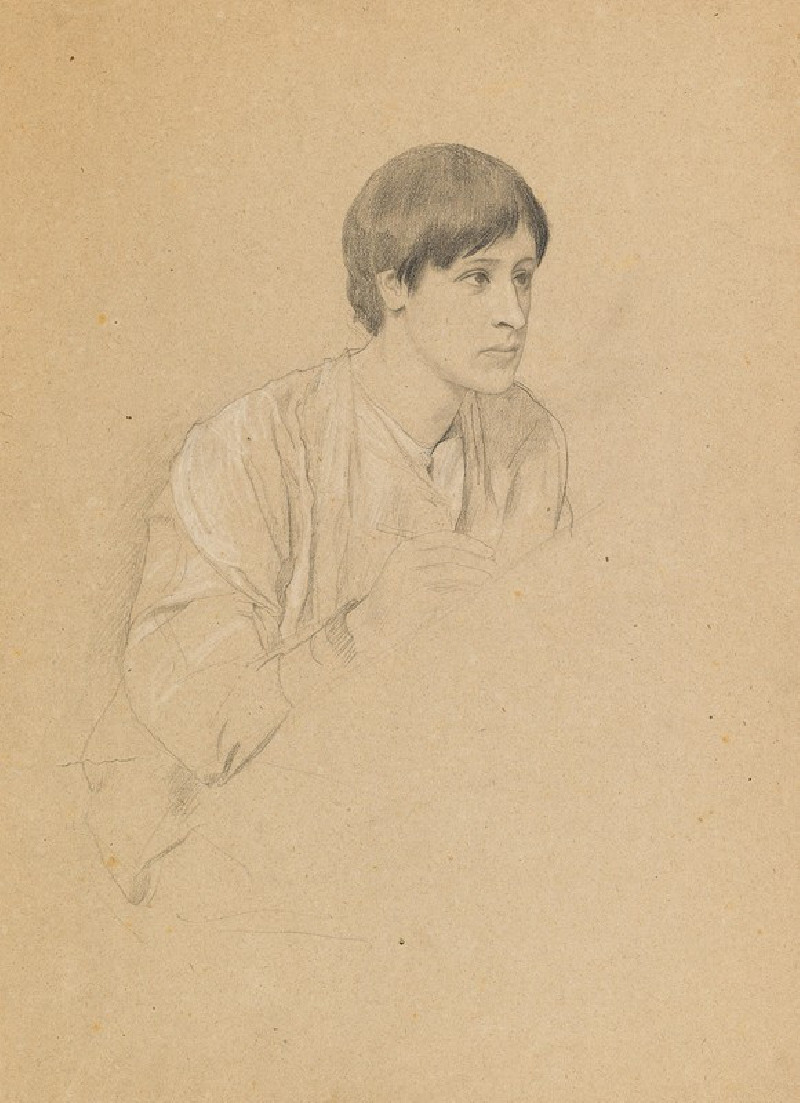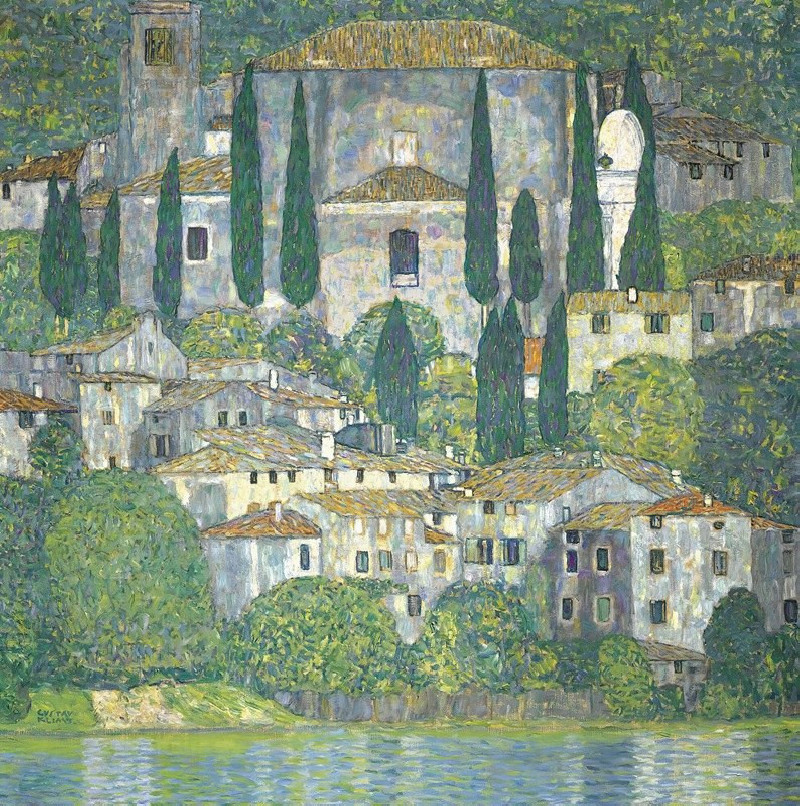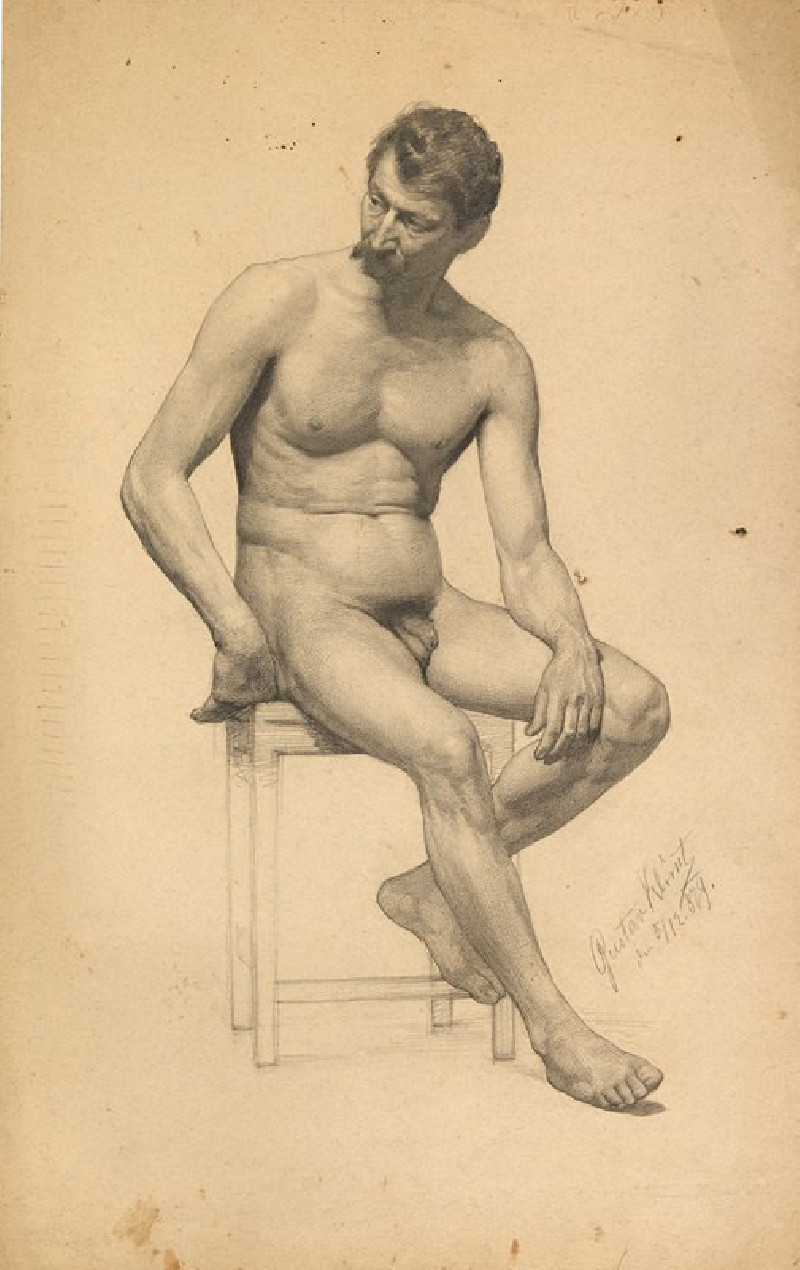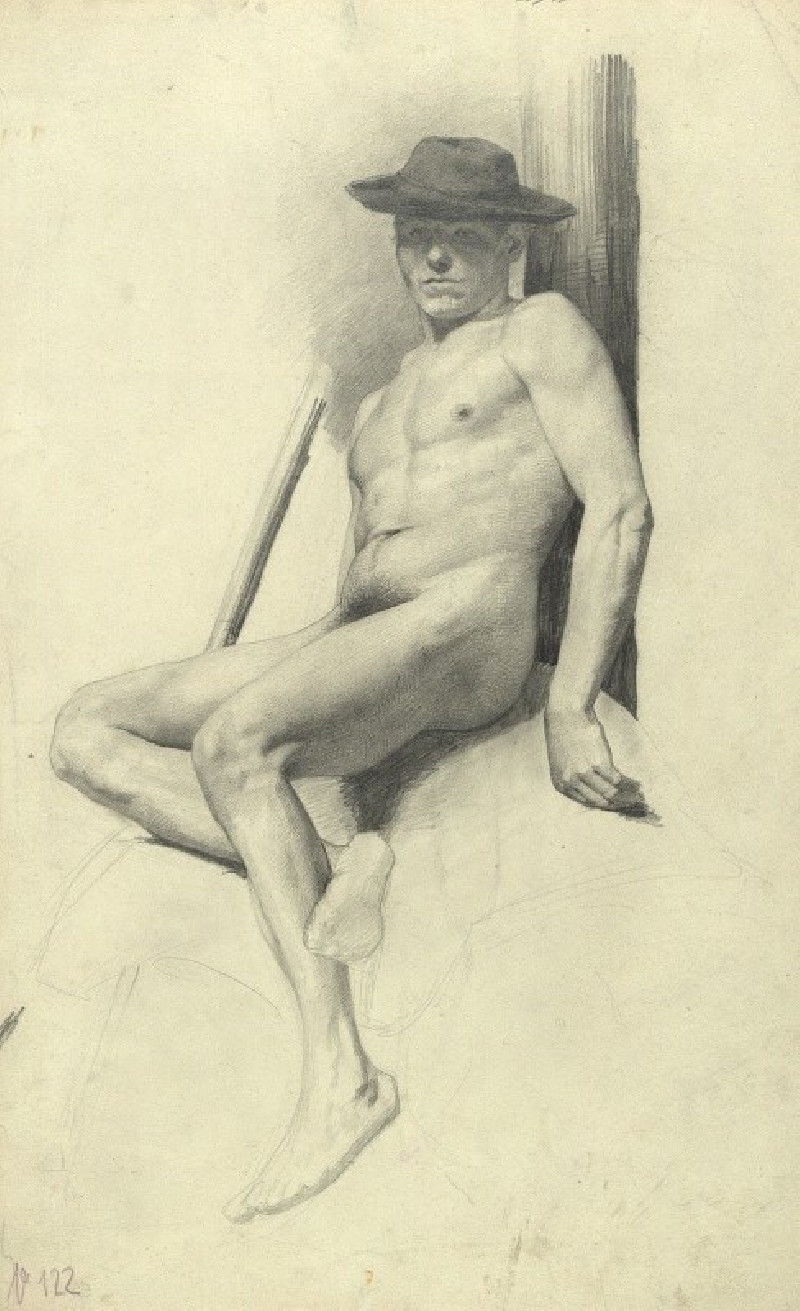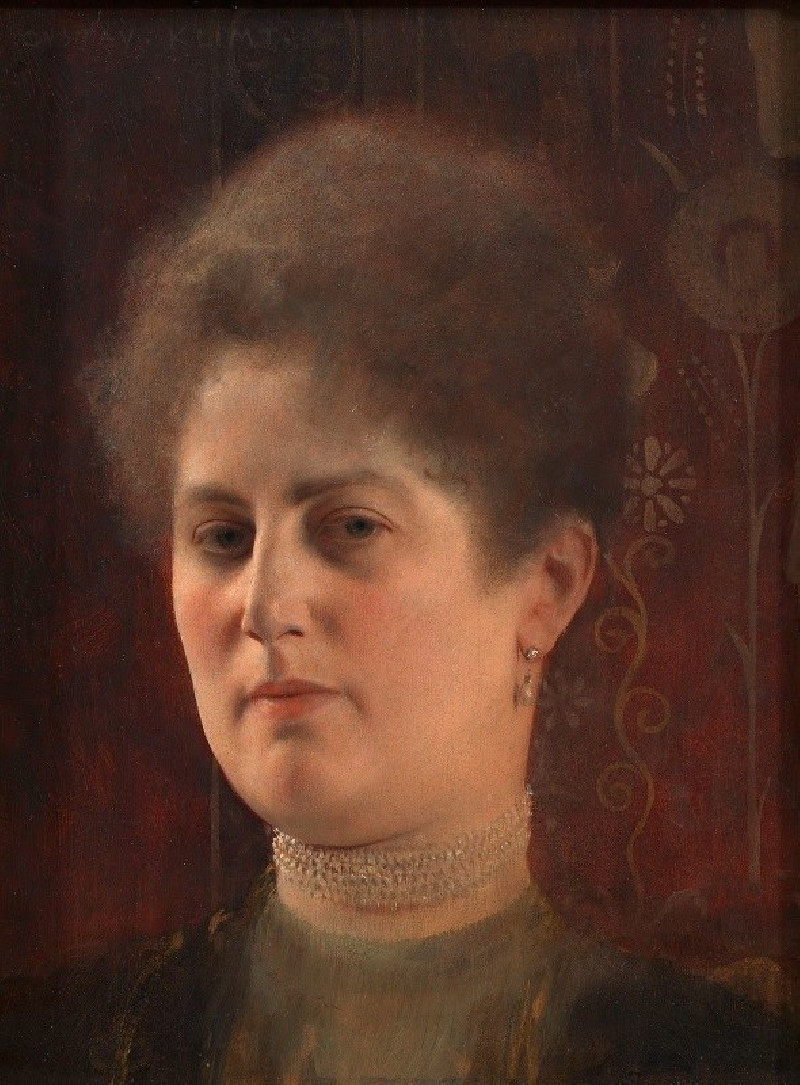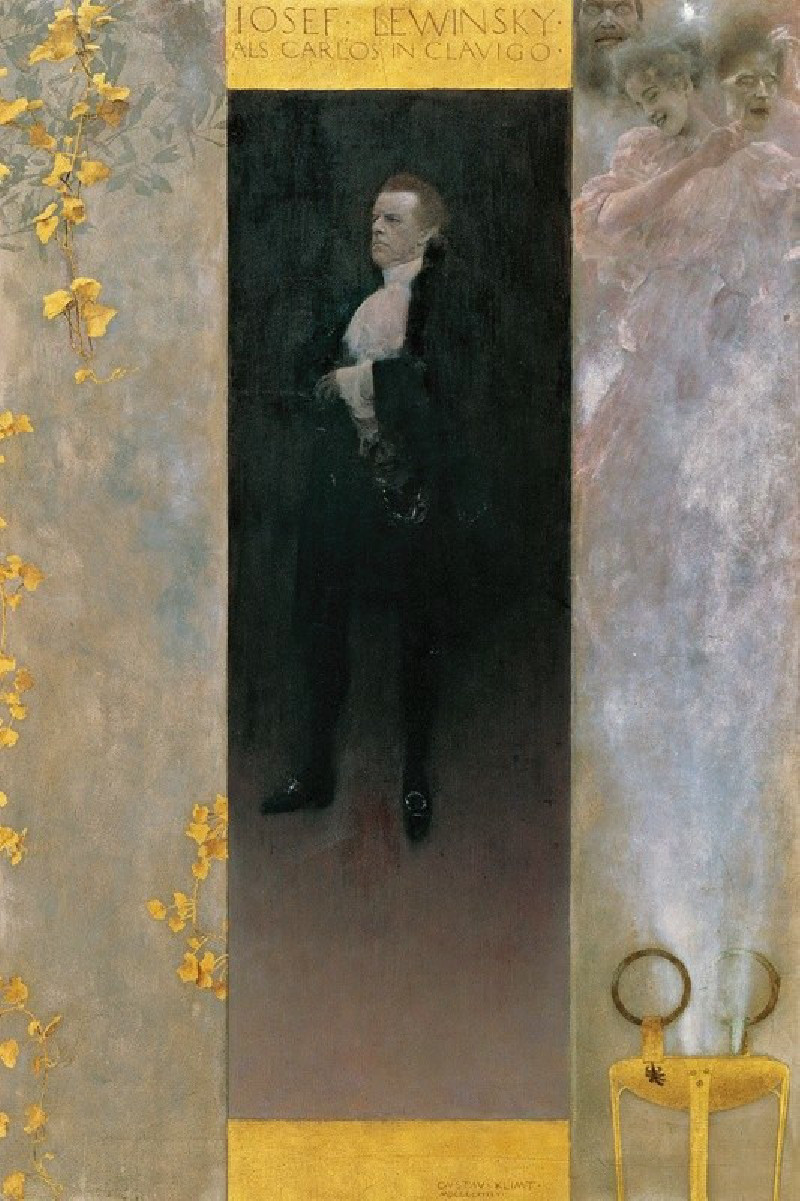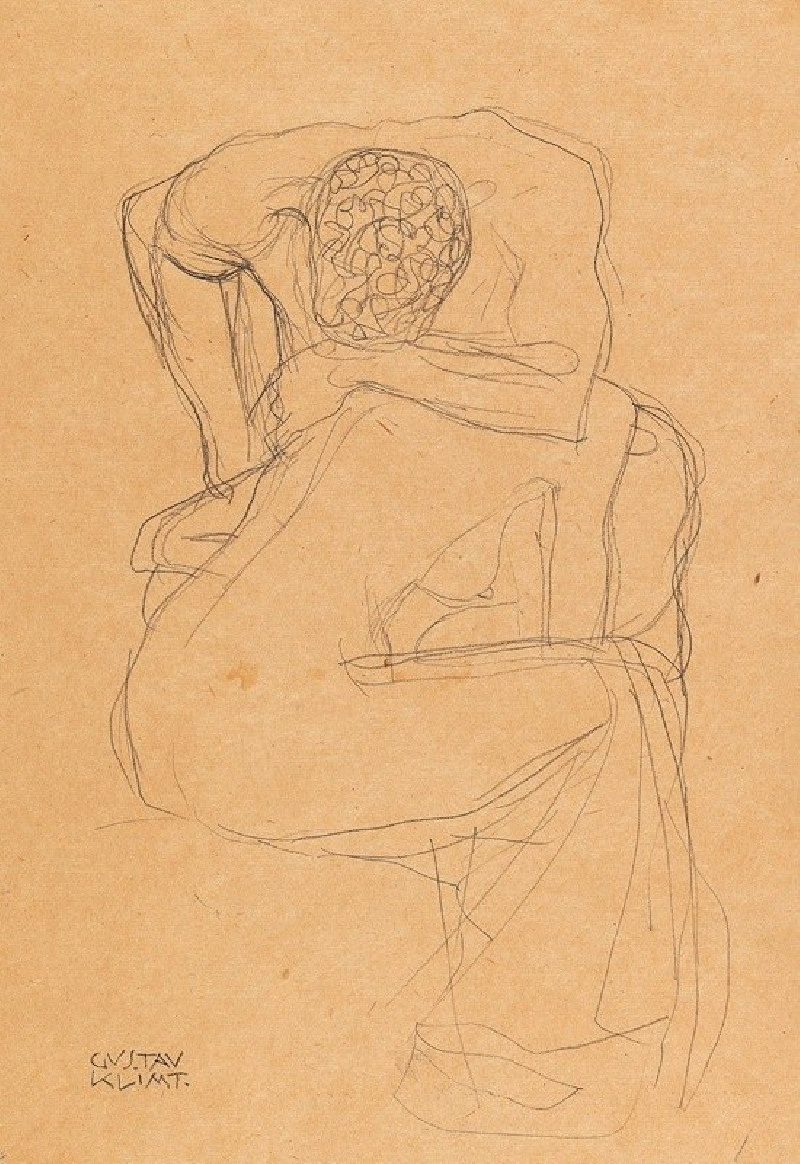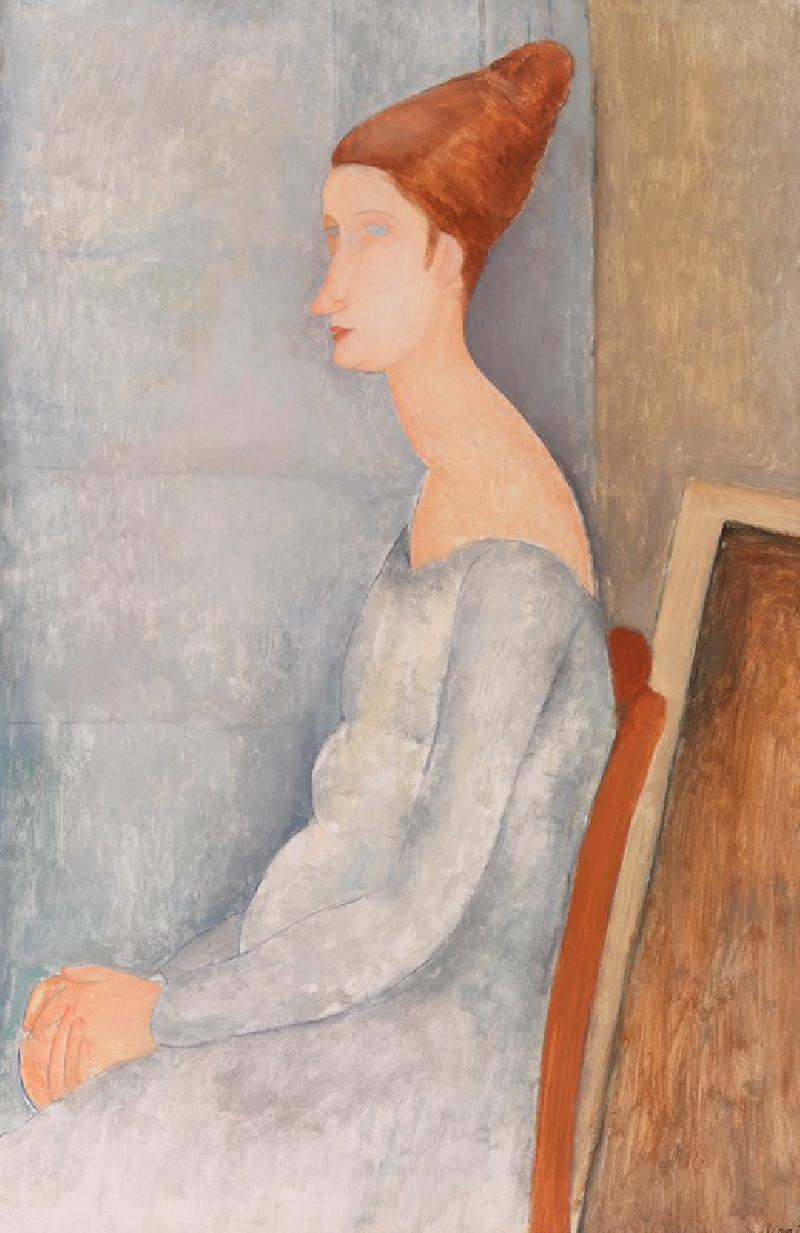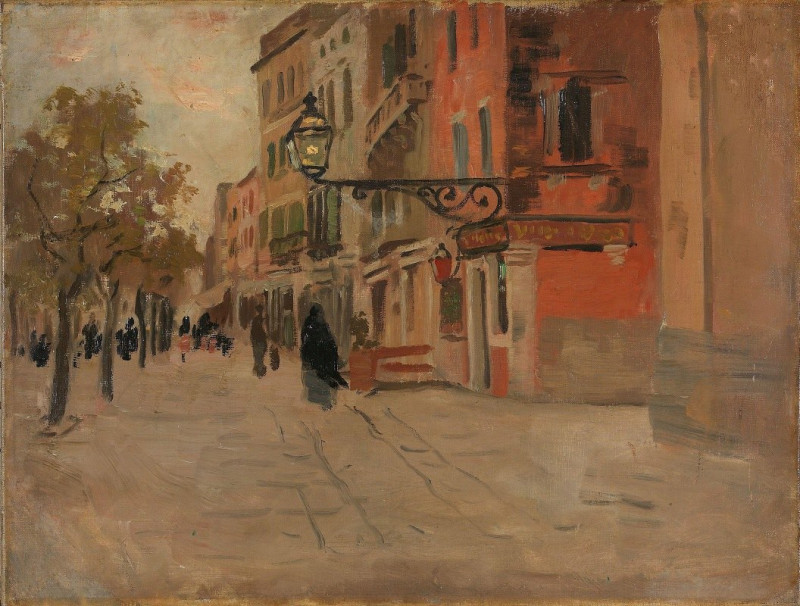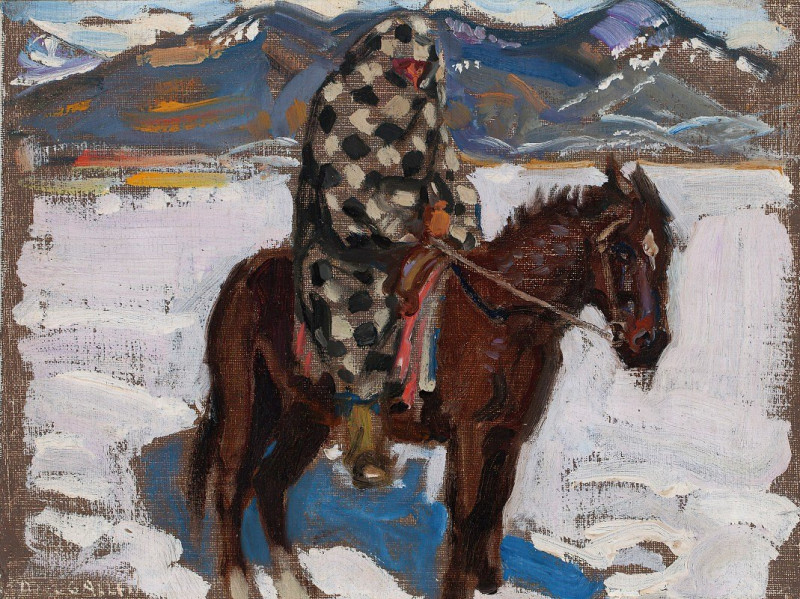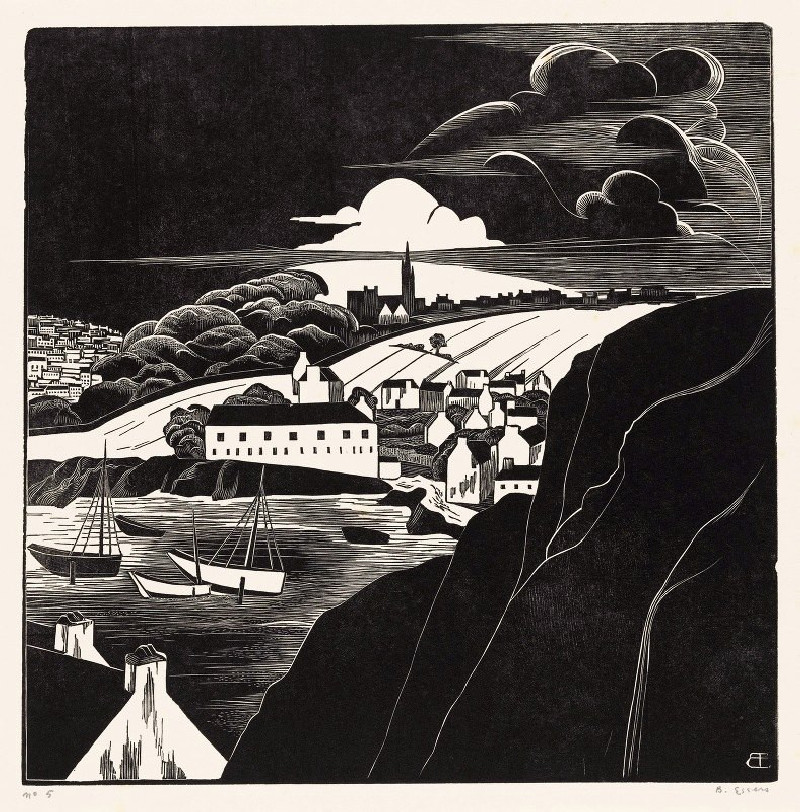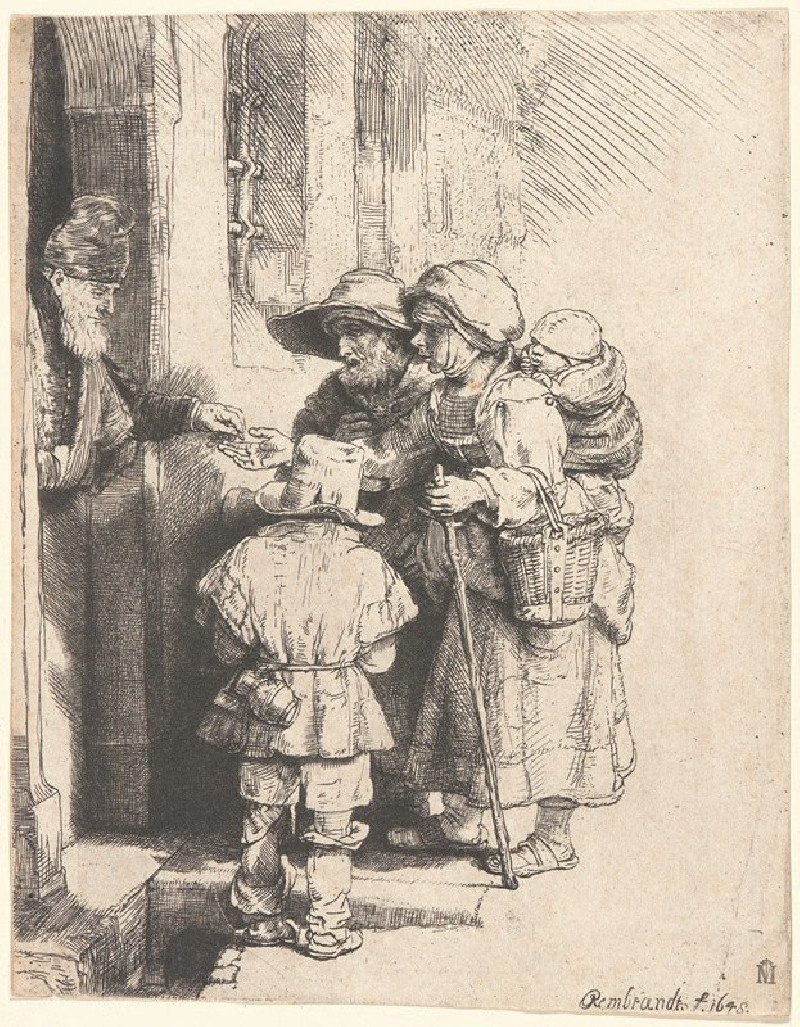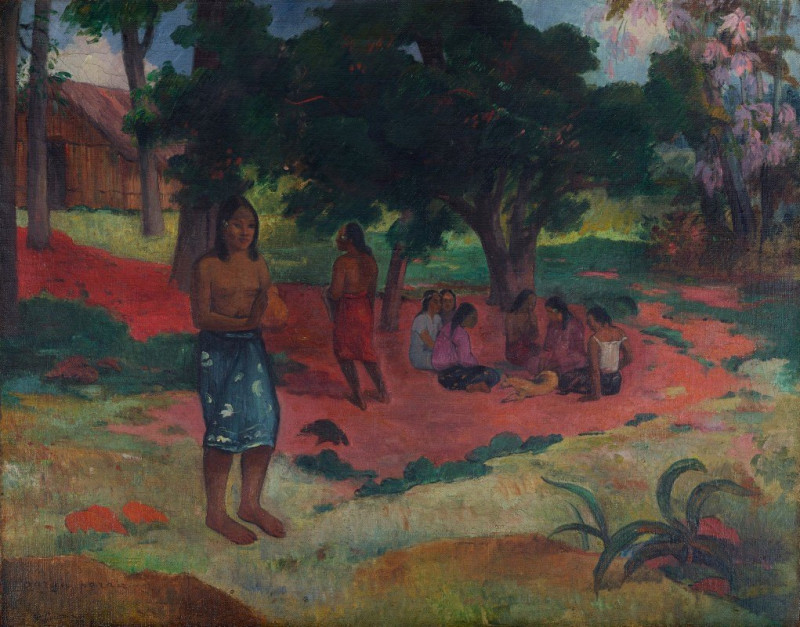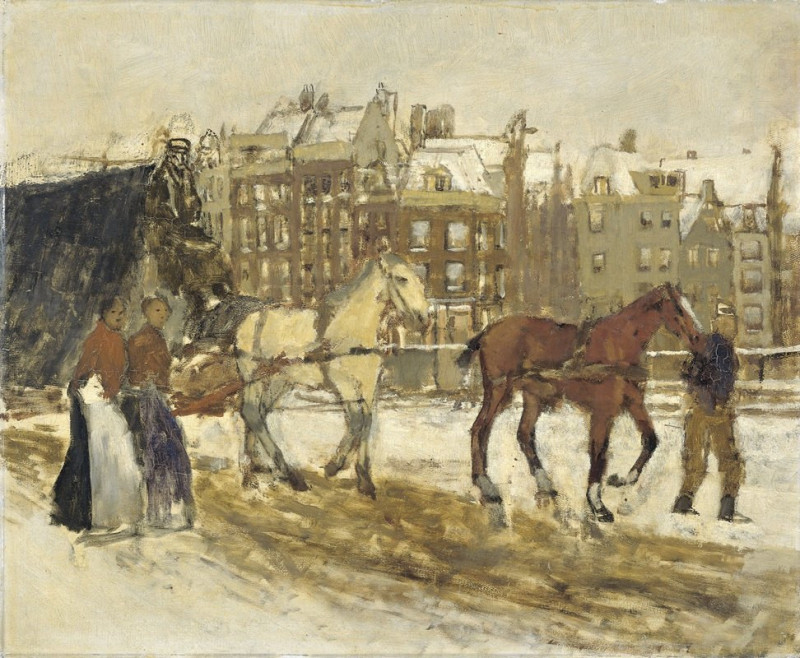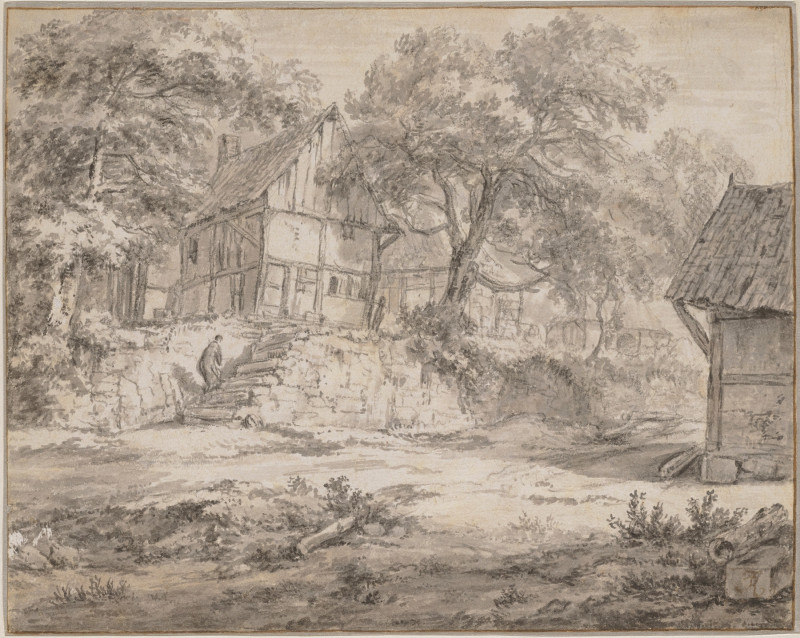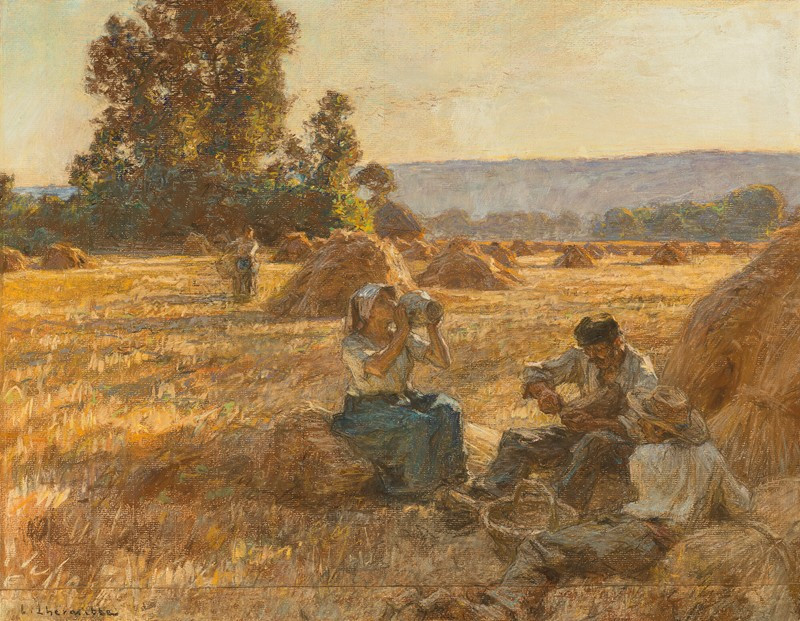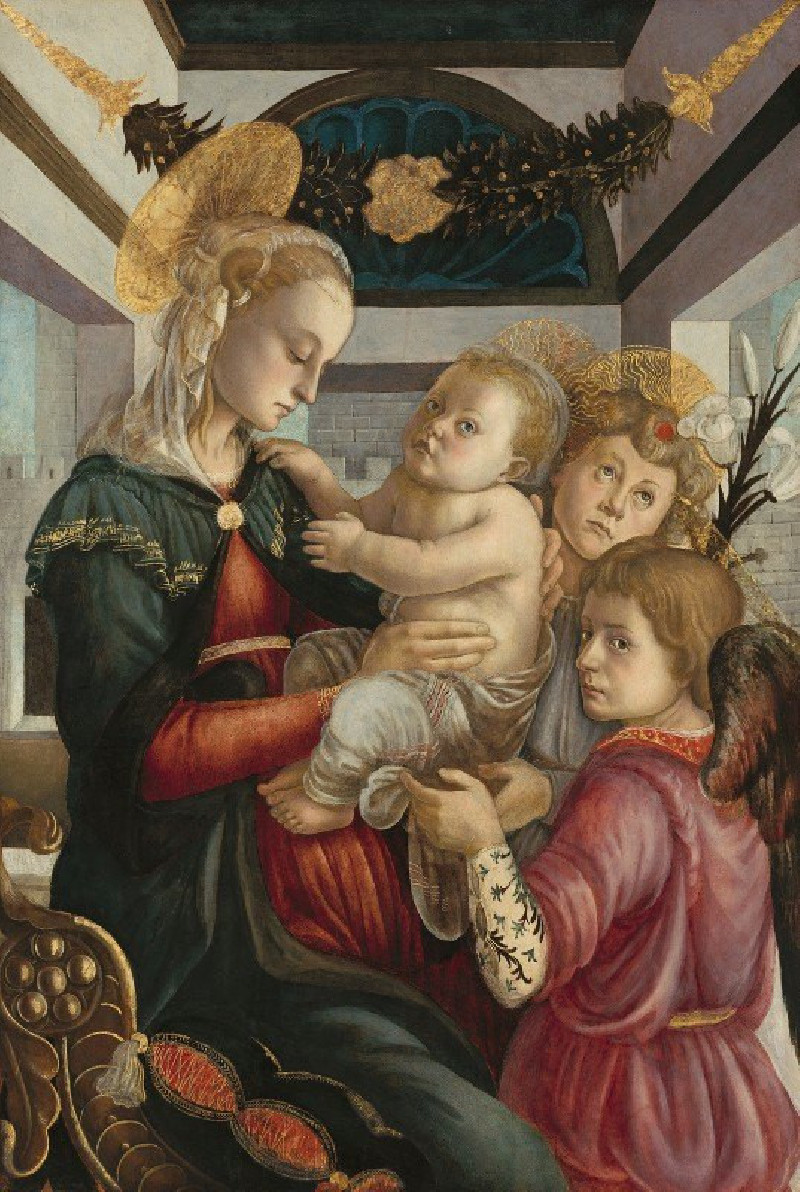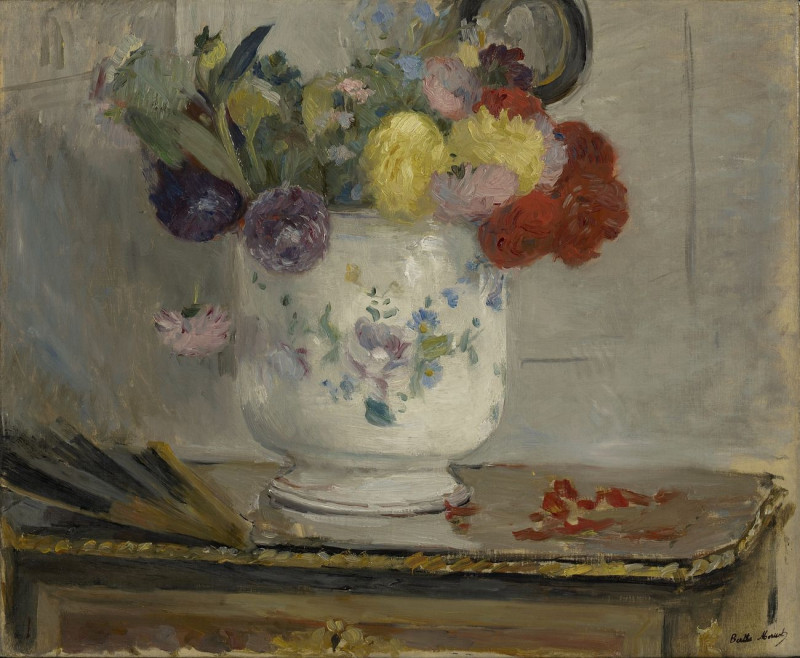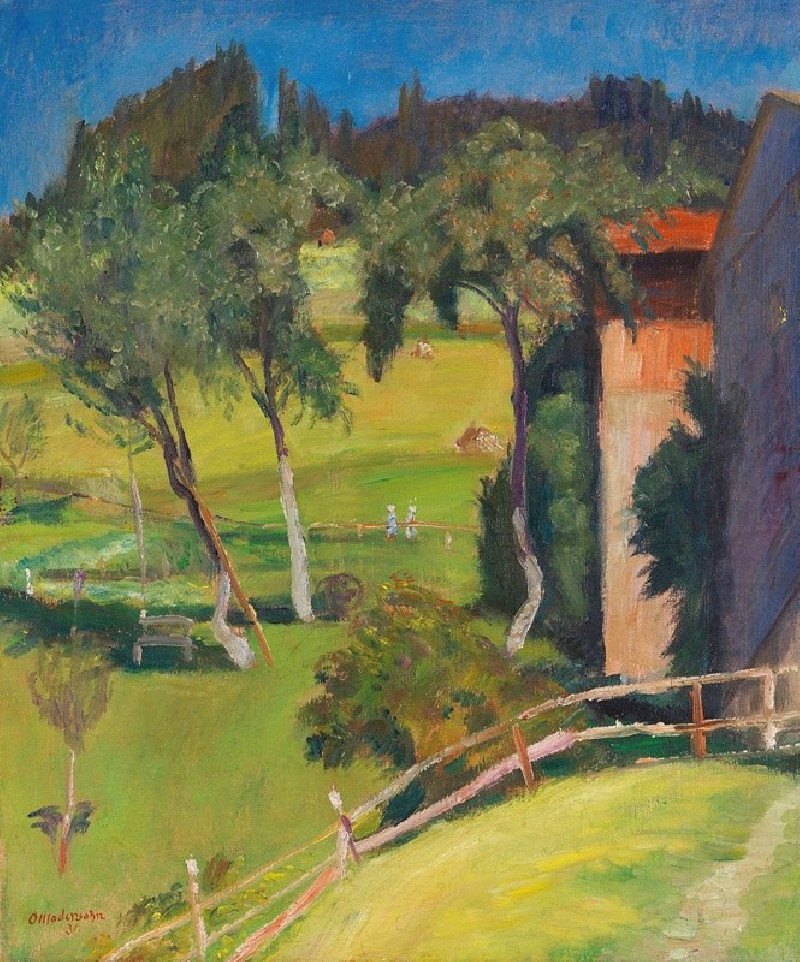Altar des Dionysos (1886)
Technique: Giclée quality print
Recommended by our customers
More about this artwork
"Altar des Dionysos" (1886) by Gustav Klimt invites viewers into a mythological realm steeped in sensuous and classical richness. This painting takes a unique approach by sculpting a narrative arc through a semi-circular, panoramic composition that evokes the feel of an ancient bas-relief.At the core of the artwork, a relaxed, yet potent, depiction of Dionysus, the god of wine, festivity and ecstasy in Greek mythology, is surrounded by figures embodying revelry and repose. The painting's left side features a languid male figure, reclining in a deep slumber, an embodiment of lethargy or perhaps a post-festive exhaustion, his physical form draped casually over the stairs. This transitions into the center scene where dynamic figures engage in dance and music, celebrating under the ethereal sky and the watchful presence of Dionysus himself.Flowing to the right, the composition unravels into a scene of delicate abandon, with a female figure, likely a maenad (a frenzied follower of Dionysus), her form semi-shrouded in flowing fabrics, which adds a touch of ephemeral beauty and a hint of movement. The inclusion of architectural elements and floral garlands intimately connects with themes of celebration and worship inherent to Dionysian rituals.Klimt, through this work, bridges the classical and the modern, infusing the piece with a fluidity of form and an intensity of emotion that were hallmarks of his later artistic expressions. Each figure, though distinctly rendered, connects subtly with each other, creating a cohesive tableau that beautifully captures the essence of Dionysian mythology.
Delivery
Returns
Gustav Klimt (1862–1918) was one of the greatest Austrian symbolist painters of the Art Nouveau era. Renowned as one of the most prominent founding members, and as a president of the Vienna Art Nouveau movement (Vienna Secession). His works were mainly paintings, murals, and sketches. Marked by his numerous erotic drawings, Klimt's primary subject were female figures, and at one point his work was even criticized as pornographic. Klimt found financial success in his "Golden Phase" with decorative techniques and the prominent use of gold leaf in his paintings.


